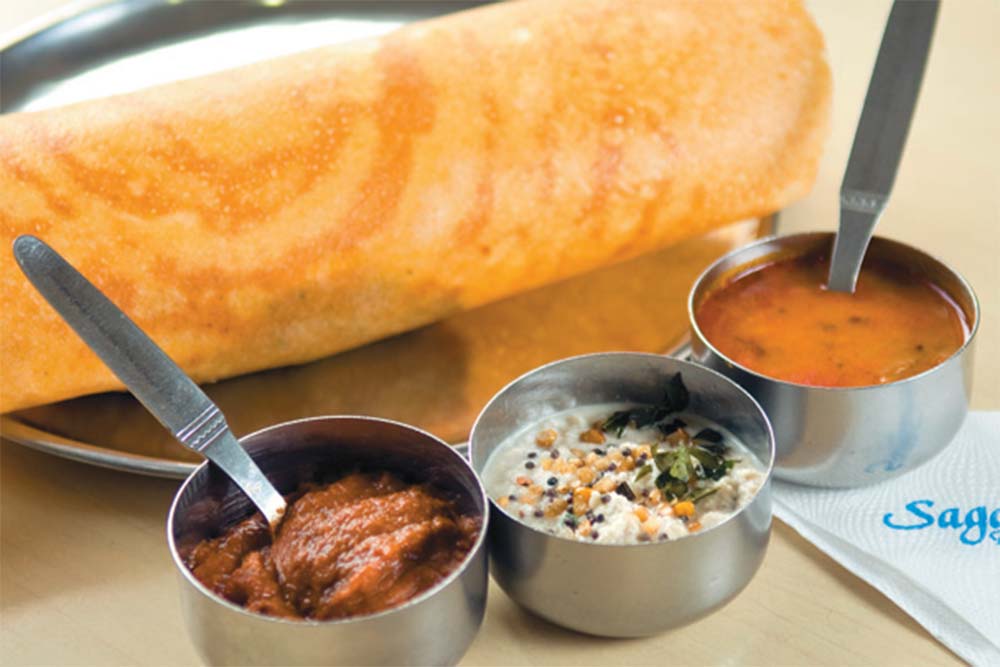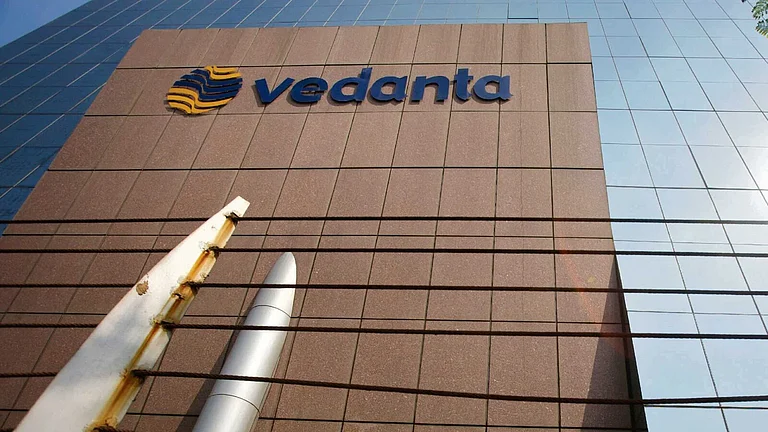Jayaram Banan is a very busy man. He is the quintessential Delhi businessman — nondescript but glued to his phone and always talking shop. Banan is also the unrivalled dosa king of Delhi. He runs Sagar Ratna, a restaurant that Delhites love to frequent, especially on Sundays, after a long evening of cultural hobnobbing.
Sagar Ratna has come a long way from its beginnings as a quaint 40-seater in a south Delhi residential colony over 25 years ago. The chain now has 67 outlets spread across Haryana, Punjab, Uttar Pradesh, Rajasthan, Himachal Pradesh and the NCR. Such is the rise that PE investors have paid ₹180 crore for a controlling stake in the operation. In 2000, Sagar Ratna’s turnover was about ₹12 crore, which doubled to ₹25 crore in 2005, and was roughly ₹70 crore in 2011. The chain makes an impressive 15-20% profit. And all this success has been showcased to the world by a man who was born in a little village called Karkala, 30 km from Udupi. One of seven children, Banan never saw himself living a life in the village. And his ascent to the high flying life of a restaurateur started when Banan failed his school exams, stole some money from his father and ran away to find a life in Mumbai.
Humble beginnings
In Mumbai, he landed his first job in a canteen. “I washed dishes in the canteen of Hindustan Organic Chemicals,” recalls the 54-year-old Banan. His first promotion came within three months of joining the canteen where he was moved up to waiting on tables. Eight years later, Banan quit as night manager to move to the capital, where he started a canteen of his own at Central Electronics in Ghaziabad.
Banan realised there was an opportunity in food. Delhi was gradually becoming more cosmopolitan and the demand for food to match different palettes was increasing. And in 1986 he started Sagar, renting a shop in Defence Colony for ₹3,250 a week where he served south Indian staples like idli, dosa and the like. “It was very difficult to pay rent but the restaurant picked up really fast,” says Banan. Sagar grew. Soon Banan rented adjacent shops and the floors above the restaurant to increase seating capacity. But Delhities couldn’t get enough of the “Madrasi” restaurant and the serpentine queues in Defence Colony continued.
In 1991, Banan bought out another popular South Indian eatery, Woodlands. This restaurant was aimed toward the more affluent. Its location (in the famous Lodhi hotel) needed a different ambience than the bare minimum the Defence Colony outlet featured. He invested ₹50,000 in furniture, increased the prices on the menu card and christened it Sagar Ratna. For a while it seemed the Sagar Ratna juggernaut would continue to roll unhindered. But the 1990s weren’t a good time to eat out. The general trend, analysts say, was to eat at home. Restaurants were aggressively expanding but Sagar Ratna bucked the trend and in 1996 it branched out by adopting the franchise model.
Second wind
Sagar Ratna’s growth story has been in spurts. “Most of our 67 restaurants opened during the last decade,” reveals K Suresh, CFO, Sagar Ratna. And roughly 60% of the outlets are franchises.
More than the loosening of control, which helped expansion, what’s really helped Sagar Ratna in the past decade is its decision to step out of its comfort zone of vegetarian cuisine to service a broader customer base. In 2001, Banan launched Swagath, which serves coastal and Chettinad cuisine. The restaurant very quickly made it to most lists of best restaurants in the capital. Swagath now has 11 outlets and earned over ₹30 crore last year (It is run as a separate profit centre under the Sagar Ratna banner).
The smell of success reached as far as New York, where it tempted private equity firm India Equity Partners to taste the chutney. In August 2011, IEP shelled out ₹180 crore for a controlling stake in the food chain. While IEP’s Arvind Nair moved in as CEO, Banan has stayed on as chairman. “It’s a strategic move to improve business and expand to become a pan-India restaurant chain,” says Banan of the takeover.
“The brand is powerful. Whatever money Banan got will appear small in five years,” says Harminder Sahni, founder and MD, Wazir Advisors. According to a study by Wazir Advisors, in 2009, Sagar Ratna’s brand penetration was well below 20% in North India. The potential to expand, therefore, remains tremendous.
The secret ingredient
But what keeps Sagar Ratna’s customers coming back for more? “Sagar Ratna is a South Indian restaurant selling authentic food where there are not many South Indian chains,” says Sahni. While Chennai veterans like Saravana Bhavan have a few outlets in Central Delhi, they have not been able to challenge Sagar Ratna’s domination despite several attempts. That’s because, says Sahni, Saravana Bhavan’s focus isn’t really on North India. “It’s looking more toward international markets,”
he points out.
Meanwhile, Banan continues to rely on his roots, bringing in almost all of the 5,000 strong employee pool — and not just cooks — from Mangalore or Tamil Nadu. But it’s an advantage that is becoming increasingly difficult to maintain. Eateries are notoriously poor paymasters and with increasing industrialisation down south, “it’s getting more and more difficult to get labour from there,” says Banan ruefully.
And a little more spice
Sagar Ratna now plans to set up shop in other parts of the country. And that’s where it faces another challenge—it will now have to evolve and change its flavours according to the regional palette. The same sambhar that’s a hit with spice-loving Punjabis may not sell in, say, Ahmedabad (where people like it sweet).
Further, Sagar Ratna is absent almost everywhere except the North. That’s why it might not be able to compete with the likes of Saravana Bhavan in the South and the innumerable Udupi joints in Mumbai, which understand their markets inside out. This is what Sagar Ratna will have to master while it widens its presence. Analysts also argue that the new owners might, in their bid to create a uniform flavour, eliminate the “homemade touch” from the food. That would be disastrous, as would be any attempt to exchange the ‘family’ environment for a more sterile corporate environment.
But CFO Suresh disagrees. “The clauses of agreement ensure win-win situation for both of us. Banan participates in day-to-day business, and there is consultation on daily basis,” he says.
Banan, meanwhile, is unperturbed. He sees the brand growing to 500 outlets within the next five years. He has won all his battles on his own terms and insists he will continue winning it the same way. The world-weary businessman hasn’t lost any of his boyish enthusiasm. And if you look hard enough, you might see the same boy who ran away from home. The only difference is, dirty dishes don’t crowd his table anymore.












 Just one email a week
Just one email a week